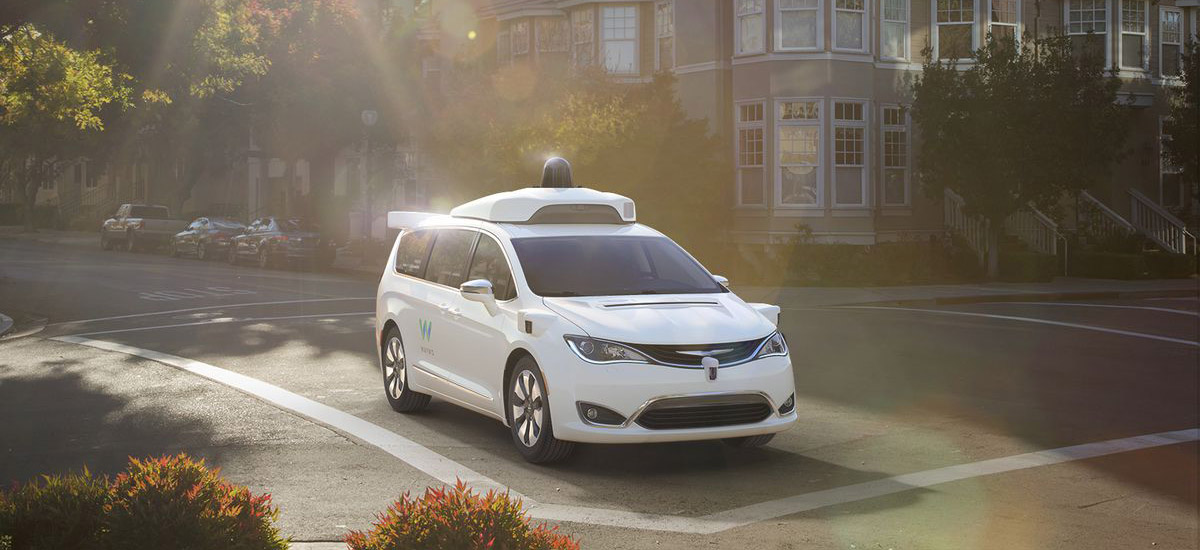
 Your Credit Estimate
Your Credit Estimate
 Your Credit
Your Credit
Your zip code helps us provide you with the most accurate vehicle pricing and vehicle availability.
We estimate your credit score to give you an idea of your monthly payments. To get an accurate payment amount, complete our credit application by clicking the Start Credit Application button below.
start credit application
The way the auto market is changing today is simply crazy. With the ever growing advancements of technology, powerful phones that can fit in one’s pocket and cars that can run on lithium batteries, what’s next? Autonomous cars, that’s what. The race for cars that drive themselves has been going on for years, and recently it’s been heating up more than ever. It seems every brand has something to introduce, and Chrysler has been one that we have heard a lot about, given their recent addition to the Google Waymo test fleet.
Before we get into that, a quick glance at what we’ve seen so far. Last year at the Specialty Equipment Market Association (SEMA) show, Kia introduced four autonomous car concepts, each designed with a specific purpose in mind, from turning the Kia Soul into a self-driving vehicle to an autonomous car for teen garage bands that don’t yet have a driver’s license. Mitsubishi Motors announced an autonomous car technology they’re working on with their electric faction, and the Mitsubishi eX concept has been teased a few times over the last year. Apple, yes that Apple, is entering the autonomous car race with Project Titan, and is it any surprise? The Apple/Google rivalry is as deep as the Apple/Microsoft clash. And let us not forget about the autonomous Chrysler Portal that debuted at the Consumer Electronics Show (CES), already planned for production in the next two years.
For about a decade, Google has been working on autonomous vehicles, recently having dedicated a whole team to the project, now known as project Waymo. Last year, Chrysler hopped on board, and just in time. Between 2015 and 2016, the Waymo self-driving vehicle reduced the need of human interaction by 64 percent. In Phoenix, Arizona, the Waymo project launched an early rider program that invites the public to participate in testing the automated vehicle technology as a ride-hailing service, sort of like Uber and Lyft, but with the self-driving Waymo. In addition to this, Chrysler helped to expand the size of the Waymo test fleet with 500 more Pacifica hybrid minivans, bringing the number of modified Pacifica hybrid vehicles to about 600 in total.
What this all means is that, if you live in Phoenix, Arizona then you can be one of the first to drive, well, more like ride in, an autonomous vehicle set for commercialization and mass production. With all of these auto brands competing and the recent Chrysler and Waymo news, one has to think what the streets will look like in the coming years. As one writer on The Drive put it, “The next time you're stuck in traffic, be sure to take a good look around you—because America's roadways might look very different before you know it.” If mass production and commercialization of autonomous vehicles, or semi-autonomous vehicles, are given the green light, then the daily commute to work may change as we know it.
We’re thinking the first step may be semi-autonomous vehicles, or vehicles like the Waymo wherein the vehicle drives itself, but allows for human-driver interaction at any time. That might be better than handing the controls over to a computer 100-percent, for now at least. Can you imagine explaining an auto accident to your insurance company if driving a completely autonomous vehicle? Gives the classic “My dog ate my homework” line a run for its money.
What we know for now is, according to independent research group RethinkX, by the year 2030, 95-percent of all driving in the U.S. may be handled by autonomous electric vehicles. Not only that, but these futuristic vehicles may be able to drive to your location using a smartphone app to pick you up if the teaser in our Google Allo piece plays any part in it.
We’ll be looking forward to what happens next. How about you?
Photo Source/Copyright: TheVerge.com